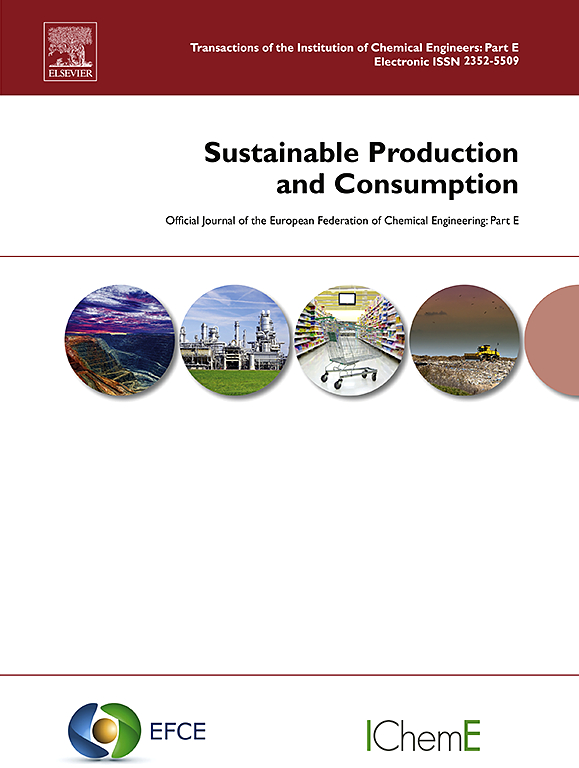Reusable food primary packaging in retail supply chain: A multi-objective optimization framework
IF 10.9
1区 环境科学与生态学
Q1 ENVIRONMENTAL STUDIES
引用次数: 0
Abstract
The increasing demand for sustainable and equitable raw material utilization underscores the potential of reusable packaging as an effective solution. The food retail sector, a significant contributor to packaging waste, faces a clear need for comprehensive decision support systems to manage the complexities of reusable packaging circular networks. Managing these networks requires balancing environmental efficiency with economic viability, considering enabling conditions like consumer return attitude, packaging design properties (weight, size, and stackability), and players' logistic proximity. This paper presents a multi-stage and multi-objective optimization framework designed to select optimal product-package combinations and establish a circular network that encourages the adoption of reusable food packaging in retail. The framework is applied to a significant real-world application consisting of two nationwide retailers in France. The findings confirm that high return rates (>60–70 %) are essential for the viability of the circular system whilst ensuring low scrap rates (<15 %) tip the balance for environmental benefits. Lightweight and stackable packaging solutions enhance resilience in systems with uncertain return and scrap rates. Packaging properties must be evaluated alongside logistics network configuration, as packaging selection is tied to production sites, shaping network adaptability. We introduce a new metric that evaluates packaging and network suitability by assessing packaging weight and transportation distances. A lower value indicates improved resilience and supports the long-term viability of the system. The results emphasize the role of Reusable Vending Machines (RVMs) in reducing environmental burdens, as a higher number of installations leads to greater impact reductions. However, RVM costs account for 70–87 % of differential expenses, depending on deployment scale and budget constraints. To address this, we propose a RVM allocation strategy that optimizes distribution while balancing economic and environmental trade-offs. This multi-objective optimization framework provides valuable insights for policymakers and businesses striving to scale reusable food packaging initiatives effectively.
零售供应链中的可重复使用食品初级包装:一个多目标优化框架
对可持续和公平的原材料利用日益增长的需求强调了可重复使用包装作为有效解决方案的潜力。食品零售部门,包装废弃物的重要贡献者,面临着一个明确的需要全面的决策支持系统来管理可重复使用的包装循环网络的复杂性。管理这些网络需要平衡环境效率和经济可行性,考虑诸如消费者退货态度、包装设计属性(重量、尺寸和可堆叠性)以及玩家的物流邻近性等有利条件。本文提出了一个多阶段、多目标的优化框架,旨在选择最佳的产品包装组合,并建立一个循环网络,鼓励在零售中采用可重复使用的食品包装。该框架应用于由法国两家全国性零售商组成的重要现实应用程序。研究结果证实,高回收率(60 - 70%)对循环系统的可行性至关重要,同时确保低废废率(15%)有利于环境效益的平衡。轻量化和可堆叠包装解决方案提高了系统的弹性与不确定的回报和废品率。包装属性必须与物流网络配置一起进行评估,因为包装选择与生产地点联系在一起,形成网络适应性。我们介绍了一个新的度量,通过评估包装重量和运输距离来评估包装和网络适用性。较低的值表示增强的弹性,并支持系统的长期生存能力。研究结果强调了可重复使用自动售货机(RVMs)在减少环境负担方面的作用,因为安装数量越多,减少的影响就越大。然而,RVM成本占差额费用的70 - 87%,这取决于部署规模和预算限制。为了解决这个问题,我们提出了一种RVM分配策略,在平衡经济和环境权衡的同时优化分配。这个多目标优化框架为政策制定者和企业提供了有价值的见解,努力有效地扩大可重复使用的食品包装倡议。
本文章由计算机程序翻译,如有差异,请以英文原文为准。
求助全文
约1分钟内获得全文
求助全文
来源期刊

Sustainable Production and Consumption
Environmental Science-Environmental Engineering
CiteScore
17.40
自引率
7.40%
发文量
389
审稿时长
13 days
期刊介绍:
Sustainable production and consumption refers to the production and utilization of goods and services in a way that benefits society, is economically viable, and has minimal environmental impact throughout its entire lifespan. Our journal is dedicated to publishing top-notch interdisciplinary research and practical studies in this emerging field. We take a distinctive approach by examining the interplay between technology, consumption patterns, and policy to identify sustainable solutions for both production and consumption systems.
 求助内容:
求助内容: 应助结果提醒方式:
应助结果提醒方式:


